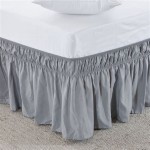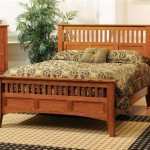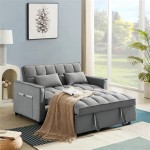DIY Fold-Down Bed: A Guide to Creating a Space-Saving Solution
In the realm of home improvement, maximizing space often becomes a paramount concern. This is especially true for small apartments, studios, or rooms with limited square footage. A fold-down bed, also known as a Murphy bed, offers a clever solution to this spatial dilemma. By seamlessly transitioning from a comfortable sleeping surface to a concealed storage space or a stylish wall feature, a DIY fold-down bed can dramatically enhance the functionality of any living environment. This guide provides a comprehensive overview of the process involved in creating a DIY fold-down bed, covering essential materials, construction techniques, and customization options.
Key Components of a DIY Fold-Down Bed
A fold-down bed consists of several key components that work in harmony to create a functional and safe sleeping platform. These components include:
- Frame: The foundation of your bed, typically constructed from sturdy lumber like pine or plywood. It supports the mattress and provides stability when folded and unfolded.
- Hinges: Heavy-duty hinges allow the bed to fold and unfold smoothly, ensuring a secure and stable movement. Consider using continuous hinges or piano hinges for optimal durability.
- Support Brackets: These brackets, often made of metal, are crucial for supporting the weight of the bed when it is folded against the wall. They provide a secure and robust connection between the frame and the wall.
- Mattress: Choose a mattress that fits the dimensions of your bed frame and provides the desired level of comfort for sleeping. Consider a foam mattress, which is typically lighter and more compact than traditional spring mattresses.
- Hardware: This includes screws, bolts, nuts, and other fasteners required to assemble the bed, mount it to the wall, and secure the mattress.
Step-by-Step Construction Guide
The construction process for a DIY fold-down bed involves a series of steps, each demanding precision and careful execution. Here's a general guide:
- Plan and Design: Determine the desired size, shape, and features of your fold-down bed. Consider the available space and the type of mattress you intend to use. Sketch out a detailed plan, noting dimensions and specifying materials.
- Gather Materials: Acquire the necessary lumber, hinges, support brackets, hardware, and other materials based on your design. Ensure all components are of high quality and meet the required specifications.
- Construct the Frame: Cut the lumber to the desired lengths and carefully assemble the frame using wood glue and screws. Use a level and measuring tape to ensure that the frame is square and structurally sound.
- Install Hinges: Attach the hinges to the frame, following the manufacturer's instructions. Ensure that the hinges are securely fastened and aligned correctly. If using piano hinges, ensure that they are long enough to accommodate the full length of the fold-down bed.
- Mount Support Brackets: Attach the support brackets to the wall, using a stud finder to locate wall studs for maximum stability. Ensure that the brackets are securely mounted and positioned to support the weight of the bed.
- Install Bed Frame: Attach the frame to the support brackets using the appropriate hardware. Ensure that the bed frame is firmly attached and swings smoothly and securely between the folded and unfolded positions.
- Add Finishing Touches: Finish the bed by sanding, painting, or staining the wood. You can also add decorative details like trim or moldings to enhance the aesthetic appeal.
Customization and Safety Considerations
The beauty of a DIY project lies in its adaptability. A DIY fold-down bed offers ample opportunities for customization. You can personalize the design with features like:
- Storage Compartments: Incorporate shelves, drawers, or a hidden compartment within the bed frame to maximize storage functionality.
- Integrated Lighting: Add a reading light for nighttime convenience or use LED strips for decorative backlighting.
- Custom Fabrics: Cover the bed frame with fabric or upholstery for a soft and stylish finish, coordinating with your room's decor.
Safety is paramount when designing and building a DIY fold-down bed. Here are some crucial points to remember:
- Use Heavy-Duty Hardware: Ensure that all hinges, brackets, and fasteners are adequately rated to handle the weight of the bed and mattress.
- Secure Mounting: Mount the bed frame to the wall studs for maximum stability and safety. Consider using multiple support brackets for additional support.
- Regular Inspection: Regularly inspect the hinges, brackets, and fasteners for signs of wear or damage. Tighten any loose fittings and replace any damaged components promptly.
Creating a DIY fold-down bed is a rewarding endeavor that combines practical functionality with creative expression. By following these guidelines, you can transform an otherwise underutilized space into a comfortable and versatile sleeping area. Remember to prioritize safety, carefully plan your design, and enjoy the process of bringing your vision to life.

Diy Horizontal Murphy Bed Woodbrew

Diy Murphy Bed Without Expensive Hardware

15 Diy Murphy Beds How To Build A Bed

How To Make A Murphy Bed With Folding Table Step By

Diy Murphy Bed How To Easily Build In Just 15 Simple Steps Stue Inspirasjon Hus

Diy Murphy Bed Tutorial And

King Size Diy Murphy Bed Hardware And Stay Level Desk Combo Easy

Do It Yourself Murphy Bed Kit Now Wilding Wallbeds

Diy Murphy Bed Project From A Kit Girl Just

Diy Murphy Bed Tutorial And







